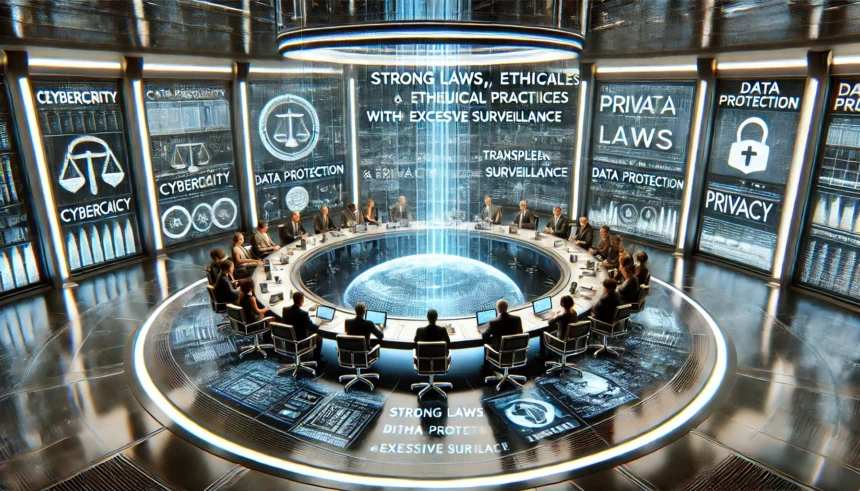In our increasingly digital world, the importance of cybersecurity can’t be overstated. Protecting sensitive information from cyber-attacks is essential, yet it often comes with ethical dilemmas. How do we balance the need for safety with the risk of excessive surveillance? This question is especially challenging for those of us who value both privacy and security.
The Growing Cyber Threat Landscape
Cyber threats have become more frequent and sophisticated. Every day, we hear about new data breaches, ransomware attacks, and other forms of cybercrime.
- Staggering Costs: According to Cybersecurity Ventures, global cybercrime damages are expected to reach $6 trillion annually by 2021. This highlights the urgent need for robust cybersecurity measures.
Surveillance as a Tool for Cybersecurity
One primary method to enhance cybersecurity is surveillance. By monitoring network traffic and analyzing patterns, organizations can detect and respond to potential threats more effectively. Both government agencies and private companies use various forms of surveillance to protect their assets and citizens.
Government Surveillance Programs
Government programs like the NSA’s PRISM initiative aim to prevent terrorism and other threats by collecting data from major tech companies. However, the broad reach of these programs has raised significant privacy and civil liberties concerns.
- PRISM: This program allows the NSA to access emails, chat logs, and other private communications. The revelations by Edward Snowden in 2013 highlighted the extensive nature of government surveillance.
Corporate Surveillance
It’s not just governments that engage in surveillance. Private companies also monitor their employees and customers to prevent data breaches and improve services.
- Employee Monitoring: According to a report by Accenture, 62% of organizations use some form of employee monitoring. While this can help in preventing insider threats, it often feels invasive.
Ethical Dilemmas in Cybersecurity
The ethical dilemmas of cybersecurity revolve around finding a balance between safety and surveillance. Surveillance can significantly enhance security by detecting and preventing cyber threats, but it can also erode trust and infringe on privacy.
The Need for Transparency
Transparency is crucial in addressing these ethical dilemmas. Organizations must be clear about what data they collect, how it’s used, and who has access to it. This helps build trust and ensures that surveillance practices are fair and justified.
- Company Practices: For example, Apple has made significant efforts to highlight its commitment to privacy, detailing how they protect user data. This transparency helps users feel more secure and informed about how their information is handled.
Balancing Safety and Surveillance
Balancing safety and surveillance requires a multifaceted approach:
- Strong Privacy Laws: Governments need to implement robust privacy laws that protect citizens while allowing for necessary surveillance. The General Data Protection Regulation (GDPR) in the EU is a good example of legislation that aims to balance these needs.
- Ethical Surveillance Practices: Organizations should adopt ethical surveillance practices, ensuring that data collection is necessary, proportionate, and transparent.
- Public Awareness: Individuals must be aware of their digital footprint and take steps to protect their privacy. This includes using strong passwords, enabling two-factor authentication, and being cautious about the information shared online.
- Technological Solutions: Investing in technologies that enhance security without compromising privacy is essential. For example, encryption can protect data while minimizing the need for intrusive surveillance.
The Challenge of Balancing Safety and Privacy
Balancing safety and privacy is no easy task. Surveillance can be a powerful tool for preventing cyber threats, but it must be used responsibly. Ethical dilemmas arise when surveillance becomes too intrusive, leading to a loss of trust and potential abuse of power.
The Role of Technological Innovations
Technological innovations offer promising solutions to these ethical dilemmas. Encryption, for example, is a critical technology that can protect data from unauthorized access while preserving privacy.
- End-to-End Encryption: This ensures that only the intended recipient can read the message, providing a high level of security.
- Blockchain: This emerging technology can enhance transparency and security. Its decentralized nature makes it difficult for any single entity to control the network, reducing the risk of surveillance abuse.
Platforms like Brave browser and DuckDuckGo search engine use blockchain and privacy-focused technologies to offer secure and private browsing experiences.
The Importance of Ethical Guidelines
Developing and adhering to ethical guidelines is crucial for navigating the complexities of cybersecurity. Organizations should establish clear policies that prioritize privacy and transparency. These guidelines should outline the acceptable use of surveillance technologies and ensure that data collection practices align with ethical standards.
Personal Reflections
Reflecting on my own experiences, I understand the need for surveillance in enhancing cybersecurity. However, it’s essential that this surveillance is conducted ethically, with respect for privacy and civil liberties. I’ve become more vigilant about the services I use and the information I share online, seeking out platforms that prioritize transparency and privacy.
Conclusion
The ethical dilemmas of cybersecurity are complex and multifaceted. While surveillance plays a crucial role in protecting against cyber threats, it also raises significant privacy concerns. By implementing strong privacy laws, adopting ethical practices, and promoting public awareness, we can strive to balance safety and surveillance effectively.
4o
















